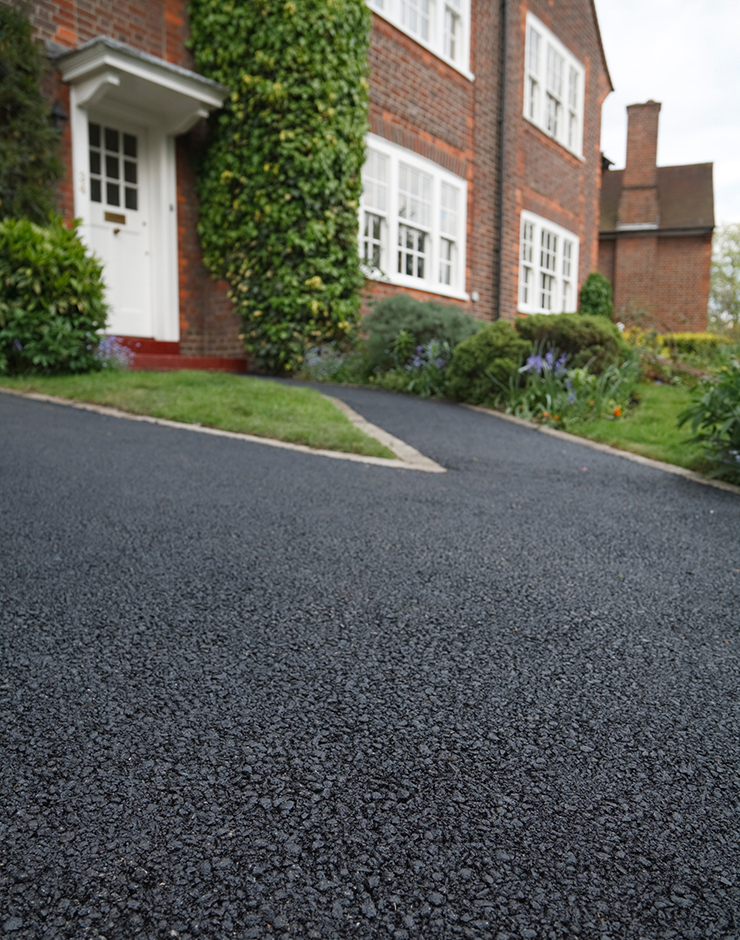When it comes to driveways, many of us may think it’s a straight choice between tarmac or concrete, with the extra choice of gravel if we have a large, sweeping drive and a brand new Mercedes to drive down it. But the choices for those car spaces and entrance-ways in front of our homes can be far more interesting and a great deal more modern than that. Here are our five pointers for the perfect driveway.

-
Make it modern
Concrete and tarmac are cheap solutions to creating or resurfacing a driveway, but neither has much in the way of kerb appeal. Far better to go with something like modern paving blocks, preferably smaller ones, to get a modern look that will stand out on your street. Of course, you’ll want to keep your drive clean and weed-free, so be sure to ask your driveway paver to have a weed-proof membrane fitted beneath the slabs. It’ll save you lots of time on your knees weeding. Blocks come in a huge array of colours and you can even have them laid in swirling circles rather than regimented straight lines.
2. Go permeable
Driveways are large areas of hardstanding and this can create problems when it comes to the flow of water. It can also lead to flooding in areas where excess is already a problem, including homes built near to or on flood plains. Having a permeable driveway means that water can drain away quickly, so you won’t end up with a waterlogged driveway. It also gives water somewhere to go when there’s heavy rain. This can be an advantage if you’re ever at risk of a flood. It can also stop any pollutants from the car (such as oil) being washed off into the drains.
3. Consider landscaping
Grasses and bright blooms, as well as shrubs that don’t spread too easily, can all look wonderful as a border to your driveway. Many tradespeople will be able to do some landscaping for you, or will work with a gardener who can. If you want to be and look green, then why not install a green driveway? This is grass atop a reinforced surface that can be entirely permeable. Alternatively, you can have a line of soil with plants in down the middle of the drive, between where your wheels will sit. Naturally, any plants won’t be able to grow too high, but it’s a way to get some greenery onto the drive while having somewhere for water to drain away.

4. Don’t let the gravel fly
Gravel drives can look great, but they also require a lot of maintenance, especially if you find your drive is on a slight incline. If you don’t want to spend every weekend sweeping up loose gravel, or buying new gravel that has been swept away as you use the drive, then you should invest in resin-bound gravel. This involves the use of a resin to seal the driveway, but leaves it permeable. The finish is clear, so you can still choose whichever gravel you want, no matter how colourful.
5. Plan for planning
You won’t generally need planning permission to install or update a driveway, although your local council may have restrictions in place, which you should check. Some councils openly discourage new driveways in their local plan. A good driveway paver should know the lie of the land with the local authority in your area. Dropped kerbs do usually need permission from the council and you may find yourself with a bill for strengthening the pavement if they think that this is needed to protect the services (such as water, gas or electricity) beneath the pavement. It’s possible that this may be balanced out by reduced insurance premiums, or savings for on-street parking charges, if you live in an area with paid-for residents’ parking zones.
Read more tips on creating a great driveway for your property.





Great post about driveways mate. Thanks for sharing with us. Keep these kind of posts coming. Cheers.